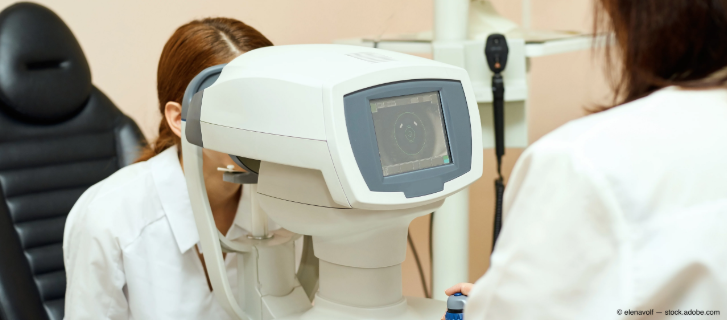
Glaucoma worsens slowly in most patients who are affected with the disease, but a substantial number of patients with glaucoma show at least moderate progression over time based on monitoring with optical coherence tomography (OCT) and visual fields.
Although OCT can detect progression in patients across all stages of disease, the findings from OCT and standard automated perimetry (SAP) frequently disagree.
Therefore, it is essential that patients who have been diagnosed with glaucoma be followed for progression using both modalities, according to Felipe A. Medeiros, MD, PhD, Distinguished Professor of Ophthalmology, and Joseph A.C. Wadsworth Endowed Chairman, Duke University School of Medicine, Durham, NC.
The above information and recommendations made by Dr. Medeiros are based on findings from analyses of data collected in the Duke Glaucoma Registry Study from over 27,000 eyes of over 14,000 patients with glaucoma or who were glaucoma suspects.
During follow-up that ranged to almost 9 years, this large patient cohort had undergone more than 100,000 tests with spectral-domain (SD) OCT.
“We believe our undertaking is probably the largest analysis of longitudinal SD OCT and SAP results to date,” Dr. Medeiros said. “Visual field testing remains the primary method of assessing glaucomatous progression. The findings of our study are helpful for understanding where OCT is useful.”
In analyzing the data, eyes were categorized as having slow, moderate, fast, or catastrophic change over time based on average annual change in SAP or average retinal nerve fiber layer (RNFL) thickness change criteria. For example, eyes with <0.5 dB/year change in SAP or <1 μm/year loss of average RNFL were classified as experiencing slow change.
Dr. Medeiros explained that the cut-off of <1 μm/year was chosen to define slow change based on findings of a study that looked at the impact of normal aging on change in RNFL thickness.
“Therefore, a slope of RNFL thickness change that is >1 μm/year is likely glaucoma progression,” he said.
The results from analyzing the data in the Duke Glaucoma Registry showed that approximately 30% of eyes experienced moderate or faster glaucomatous progression over time.
When the subjects were grouped according to glaucoma severity, it was found that in the group with early glaucoma at baseline, SD OCT detected many more eyes that were progressing fast than did visual fields.
Among subjects who had severe glaucoma at baseline, the proportion identified as having fast or catastrophic progression was approximately the same using SD OCT and visual fields. The eyes identified by the two tests, however, were not the same.
“We found that most eyes identified as having fast or catastrophic progression by OCT would have been classified as showing slow or moderate progression by their visual fields and vice versa,” Dr. Medeiros said. “This result drives our conclusion that both structural and functional tests should be used throughout the disease continuum to monitor for progression in patients with glaucoma.”
Clinical correlation
Although changes noted on serial OCT scans may indicate disease progression, clinicians need to consider whether the change is the result of worsening glaucoma or has some other cause.
A case of a patient with vitreous traction illustrates this point. The OCT imaging in this patient showed a decrease in RNFL thickness superiorly over time, but it was attributable to a region of vitreous traction that was pulling on the RNFL, and the change disappeared after the traction was released.
Dr. Medeiros also noted that different OCT instruments evaluate progression differently, but it is always essential to consider whether change is glaucoma-related.
Conclusion
“The Guided Progression Analysis software for a Zeiss OCT platform reports the statistical significance of an event analysis over time, but that feature does not decrease the importance of looking at the scans over time and making sure the quality is adequate,” he concluded.
However, the software users will have to do some work to determine some final data.
“The software for Spectralis (Heidelberg Engineering) does not give the statistical significance of the change, and so users of that device need to determine the clinical significance themselves,” Dr. Medeiros explained.
Article originally appeared in Ophthalmology Times